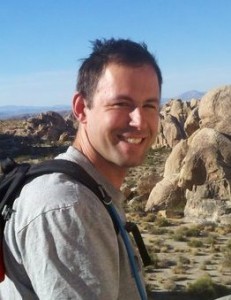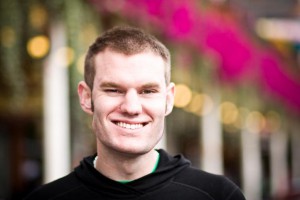 Chemistry and Biochemistry Graduate Student (2008-)
Chemistry and Biochemistry Graduate Student (2008-)
abcaldwe@nullucsd.edu
Office: 858-822-4673
B.S. Chemistry, Biochemistry,Seattle Pacific University, 2008
Research Interests
I am interested in the mechanisms of IKK activation and regulation in NFκB signaling.
Biology Graduate Student (2007-)
jalmaden@nullucsd.edu
Office: NSB 3320
Phone: 858-822-4673
B.S. Biochemistry and Cell Biology, UCSD
Research Interests
B-cells undergo dramatic expansion during immune response, which involves one of the most rapid proliferation rates known for mammalian cells. B-cell survival and death is highly regulated, and the proliferative program is limited to about 12 divisions.
The NF-kB signaling system plays a critical role in B-cell biology. Two distinct NF-kB activation pathways have been described to induce overlapping sets of NF-kB transcription factors containing the three activation domain containing NF-kB proteins, RelA, RelB, and cRel. My research is focused on understanding which NF-kB dimers control B-cell survival and proliferation. This study is complicated by the overlap of these two B-cell processes, as well as the interdependencies of NF-kB dimers produced by the NF-kB signaling system in response to B-cell activating signals. Using a combination of in depth experimental analysis and mathematical modeling, at both the cellular and molecular levels, I hope to elucidate the homeostatic and dynamic regulation of the NF-kB signaling system in B-cell physiology.
Publications
Sun, S., J. Almaden, et al. (2005). “Assay development and data analysis of receptor-ligand binding based on scintillation proximity assay.” Metab Eng 7(1): 38-44.
Humphries, P. S., J. V. Almaden, et al. (2006). “Pyridine-2-propanoic acids: Discovery of dual PPARalpha/gamma agonists as antidiabetic agents.” Bioorg Med Chem Lett 16(23): 6116-9.
Humphries, P. S., S. Bailey, et al. (2006). “Pyridine-3-propanoic acids: Discovery of dual PPARalpha/gamma agonists as antidiabetic agents.” Bioorg Med Chem Lett 16(23): 6120-3.
Ralph, E. C., J. Almaden, et al. (2008). “Glucose modulation of glucokinase activation by small molecules.” Biochemistry 47(17): 5028-36.
Postdoctoral Research Fellow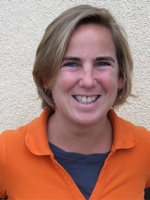
bschroefelbauer@nullucsd.edu
Office: NSB 3318
Phone: 858-822-4673
Ph.D. Molecular Biology, Univ of Life Sciences (Austria) 2007
Ph.D. student, Salk Institute 2003-2006
M.S. Biotechnology, Univ of Life Sciences (Austria) 2002
Research Interests
Coming soon.
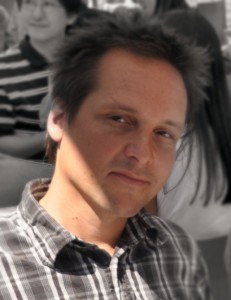 Postdoctoral Research Fellow
Postdoctoral Research Fellow
rfagerlund@nullucsd.edu
Office: NSB 3318
Phone: 858-822-4673
Ph.D. General Microbiology, University of Helsinki (2008)
M.S. General Microbiology, University of Helsinki (2003)
Research Interests
Coming soon.
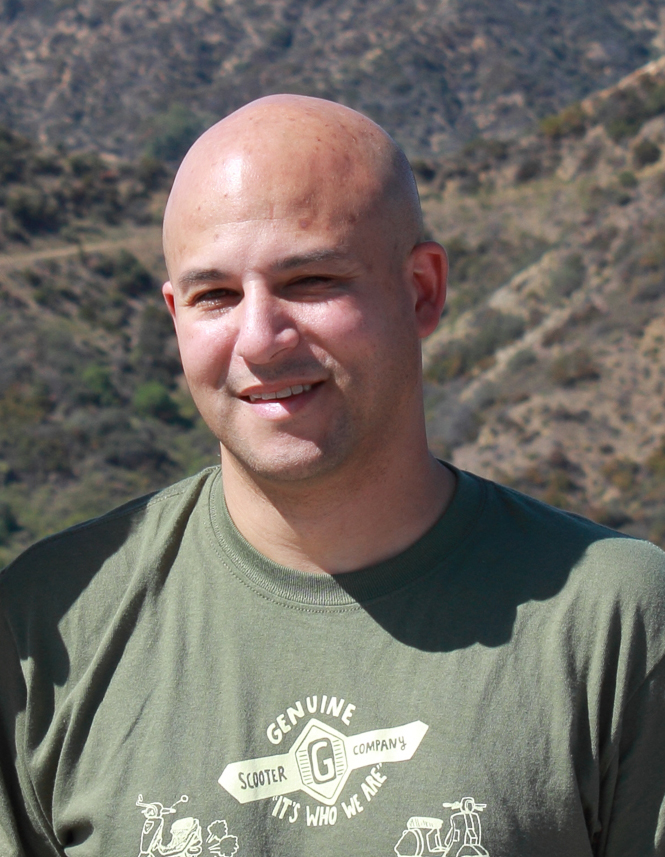
POSITION : Postdoctoral Research Fellow
EMAIL: mbehar@nullucsd.edu
PHONE: 858-822-4673
Education
Ph.D Physics (Biophysics) (2008)
The University of North Carolina. Chapel Hill, NC
Department of Physics and Astronomy
Program in Cellular and Molecular Biophysics (T. Elston Lab, Dept. of Pharmacology)
Dissertation topic: “Dynamic regulation and information transfer in intracellular-signaling pathways”
M.S. Physics (2005)
The University of North Carolina. Chapel Hill, NC
Department of Physics and Astronomy (Y. Wu Lab)
Masters Topic: “NMR study of Anomalous spin relaxation in carbon nanotubes”
Licentiate Physical Sciences (1999)
University of Buenos Aires. Buenos Aires, Argentina
Check out more about me and my research at CellularCrossroads.org
Research Interests
I am interested in dynamical aspects of intracellular signaling events and the mechanisms that impart signal specificity.
My research goal is to understand the functional principles underlying biological networks. To this end, I use mathematical models, single-cell experiments, and multi-scale computational simulations to gain insight about how cells overcome the operational constraints they face when dealing with changing environmental and internal conditions. Many of the most significant advances in the life sciences arose from collaborations that cut across disciplines. My approach to scientific research is multidisciplinary and collaborative. I expect findings to enable novel therapeutic strategies based on the restoration of malfunctioning information pathways or induction of new patterns of information flow to control cellular functions impacted by disease.
Publications
14. Shinohara H*, Behar M*, Inoue K, Hiroshima M, Yasuda T, Nagashima T, Kimura S, Sanjo H, Maeda S, Yumoto N, Ki S, Akira S, Sako Y, Hoffmann A, Kurosaki T, Okada-Hatakeyama M (2014). Positive Feedback Within a Kinase Signaling Complex Functions as a Switch Mechanism for NF-κB Activation, Science, 344, pp.760-764. PMID: 24833394. (* equal contribution)
13. Behar, M., B.arken, D., Werner, S.L., Hoffmann, A (2013). The Dynamics of Signaling as a Pharmacological Target. Cell, 155, pp.448-461. PMID: 24120141.
The equilibrium, quasi-equilibrium, and out-of equilibrium parts of a signal can be manipulated through different perturbation strategies and, under some conditions, selectively suppressed (or enhanced)
12. Mukherjee SP, Behar M, Birnbaum HA, Hoffmann A, Wright PE, et al. (2013). Analysis of the RelA:CBP/p300 Interaction Reveals NF-κB-Driven Transcription. PLoS Biol 11(9): e1001647. doi:10.1371/journal.pbio.1001647. PMID: 24019758.
11.
Behar M, A. Hoffmann. (2103)
Tunable Signal Processing through a kinase control cycle: the IKK signaling node. Biophys. J. 105(1):231-41. PMID:
23823243.
10. Basak S.,
M. Behar, A. Hoffmann. (2012).
Lessons from modeling the NFkB pathway. Immunol Rev. 246(1):221-38. PMCID:
PMC33436989. Jin M., B. Errede,
M. Behar, W. Mather, S. Nayak, J. Hasty, H.G. Dohlman, T. Elston. (2011).
Saccharomyces cerevisiae dynamically modifies pheromone gradients to achieve better mating efficiency, Sci Signal 4(186): ra54. PMCID:
PMC35577938. Schröfelbauer B., S.Polley,
M.Behar, G.Ghosh, A. Hoffmann. (2011).
NEMO ensures signaling specificity of the pleiotropic IKKb by directing its kinase activity towards IkBa. Mol Cell 13;47(1):111-21. PMCID:
PMC33981997.
Behar M., A. Hoffmann. (2010).
Understanding the Temporal Codes of Intra-Cellular Signals. Curr Opin Genet Dev 20(6):684-93. PMCID:
PMC29829316.
Behar, M., N. Hao, R. Shanks, H. G. Dohlman, T. C. Elston. (2008).
Dose-to-duration encoding and signaling beyond saturation in intracellular signaling networks. PLoS Comput. Biol. 4:e1000197. PMCID:
PMC25431075. Hao, N.,
M. Behar, T. C. Elston, and H. G. Dohlman. (2007).
Systems biology analysis of G protein and MAP kinase signaling in yeast. Oncogene 26:3254-3266. PMID:
174969204.
Behar, M., H. G. Dohlman, T. C. Elston. (2007).
Kinetic insulation as an effective mechanism for achieving pathway specificity in intracellular signaling networks. PNAS 104:16146-16151. PMCID:
PMC20421763. Hao, N, S. Nayak,
M. Behar, R. Shanks, M. Nagiec, B. Errede, J. Hasty, T. C. Elston, H. G. Dohlman. (2007).
Regulation of cell signaling dynamics by the protein kinase-scaffold Ste5. Mol Cell. 30:649-56. PMCID:
PMC25187232. Hao, N.,
M. Behar, S. C. Parnell, M. P. Torres, C. H. Borchers, T. C. Elston, and H. G. Dohlman. (2007).
A Systems-Biology Analysis of Feedback Inhibition in the Sho1 Osmotic-Stress-Response Pathway. Curr Biol 17:659-667. PMID:
173632491.
Behar, M., N. Hao, H. G. Dohlman, and T. C. Elston. (2007).
Mathematical and Computational Analysis of Adaptation via Feedback Inhibition in Signal Transduction Pathways. Biophys J 93:806-821. PMCID:
PMC1913166
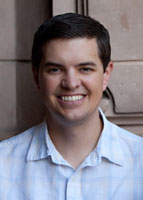
POSITION: Postdoctoral Research Fellow
OFFICE: NSB 3318
PHONE : 858-822-4673
EDUCATION:
Ph.D. Cell and Molecular Biology, Univ of Reno, Nevada (2009)
B.S. Microbiology, Boise State Univ (2003)
Research Interests
I’m interested in all things concerning T cells. I received my Ph.D. with studies of T cell cytotoxicity and activation. Currently I’m working on how different IkBs influence T cell proliferation and survival.
Publications
| Citation |
Link |
Hydrolysis of tumor cell lipids after cytotoxic T lymphocyte (CTL)-mediated death.
Bryce N. Alves, Jeff Leong, David Tamang, Viki Elliott, Mark Lowe, and Dorothy Hudig.
Int Immunol. 2009 May;21(5):543-53. |
PubMed |
Pancreatic lipase-related protein 2 (PLRP2) induction by IL-4 in CTLs and reevaluation of the negative effects of its gene ablation on cytotoxicity.
Bryce N. Alves, Jeff Leong, David Tamang, Viki Elliott, Jillian Edelnant, Doug Redelman, Cherrie A. Singer, Andy R Kuhn, Rita Miller, Mark E Lowe, and Dorothy Hudig.
J Leukoc Biol. 2009 Sep;86(3):701-12. |
PubMed |
Lipid-dependent cytotoxicity by the lipase PLRP2 and by PLRP2-positive cytotoxic T lymphocytes (CTLs).
Bryce N. Alves, Kristen Marshall, David L.Tamang, Jeff Leong, Doug Redelman, Viki Elliott, Mark E. Lowe, and Dorothy Hudig.
Cell Biochem Funct. 2009 Jul;27(5):296-308 |
PubMed |
TITLE: Professor
EMAIL: ahoffmann@nullucla.edu
EDUCATION:
Ph.D. Rockefeller University, 1994
B.A. Cambridge University 1988
Research Interests
Alex’s interests began to focus on biology when undergraduate research on topoisomerases provided the thrill of discovery while studying for a Physics BA at Cambridge. During his graduate research with Dr. Bob Roeder at Rockefeller University, he cloned genes for TBP and some components of the TFIID complex, and developed the now popular His-tag to purify and characterize recombinant proteins. During his postdoctoral training with Dr. David Baltimore at MIT and Caltech, he first focused on HIV and then aimed to understand the dynamic control of the NFκB signaling network and its ability to produce distinct gene expression programs. Reactivating undergraduate math and physics skills, and with the help of really smart students and postdocs, Alex has pursued a Systems Biology approach (iterating between quantitative experimentation and computational modeling) in order to understand how molecular networks generate precise immune responses to pathogens and control development of the immune system. A recurring theme of our research is that it is the kinetic properties of these regulatory networks that provide the explanations for understanding specificity, robustness, diversification, fine-tuning, and other characteristics of biological processes.
Alex is PI of the Signaling Systems Laboratory, first at UCSD (2003-2013) and then at UCLA (since 2014). At UCSD he was Professor of Chemistry and Biochemistry, and Director of the Graduate Program in Bioinformatics and Systems Biology, was PI of the P50 Center of Excellence for Systems Biology (SDCSB) and co-founded the BioCircuits Institute (BCI). At UCLA he is the Asher Professor of Microbiology in the Department of Microbiology, Immunology and Molecular Genetics (MIMG), and the director of the Institute for Quantitative and Computational Biosciences (QCBio).

